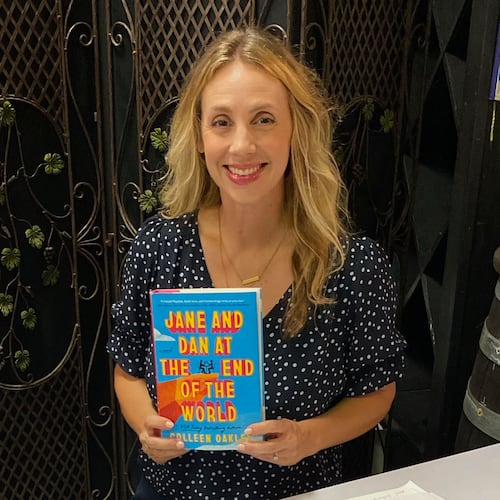From the Dust-to-Digital catalog
'Drop on Down in Florida: Field Recordings of African American Traditional Music 1977-1980.' Based on field recordings released by the Florida Folklife Program in 1981, this expanded two-CD edition includes the original recordings, 28 new tracks and a 224-page hardback book with the original liner notes, plus new essays, annotations and images. Recordings include blues, gospel and Sacred Harp music, as well as personal narratives.
'Greek Rhapsody: Instrumental Music from Greece 1905-1956.' A 152-page hardcover book with two CDs featuring 42 instrumental recordings that give a broad range of the instruments and styles of Greek music from the first half of the 20th century. Compiled and annotated by British musician, researcher and writer Tony Klein.
'I Listen to the Wind That Obliterates My Traces: Music in Vernacular Photographs 1880-1955.' Compiled by sound and visual artist Steve Roden from his personal collection, this haunting two-CD, 184-page hardback book set brings together sepia tone photographs related to the concepts of music, sound and listening, and vintage recordings that include a cowboy ballad, a poem by a Swedish Nobel laureate and radio sounds effects.
'Opika Pende: Africa At 78 rpm.' A 2012 Grammy nominee for Best Historical Album, this four-CD set with 120-page book features 100 tracks from rare 78 rpm recordings of traditional and popular African music from 1909-1960. Compiled and edited by Jonathan Ward, a Los Angeles-based collector, researcher, and writer known for the 78 rpm website Excavated Shellac.
Grammy winners Lance and April Ledbetter live in a brick bungalow in east Atlanta that doubles as headquarters for their homegrown business, Dust-to-Digital. The record label specializes in collecting, curating, repackaging and producing recordings of vintage music.
One recent morning they were in the basement, which serves as the stockroom and shipping department, preparing their inventory for an influx of mail orders for their new release. Under a low ceiling, the L-shaped space is tight. Shelves piled with boxes of CDs, labels, envelopes, tape and other supplies line nearly every wall.
Their latest project is “Longing For the Past: The 78 rpm Era in Southeast Asia,” a collection of rare recordings from Burma, Cambodia, Indonesia, Laos, Malaysia, Singapore, Thailand and Vietnam, with everything from solo singers and piano players to village string ensembles. Compiled and edited by collector and graphic designer David Murray, the lavish four-CD set is accompanied by a 272-page hardback book with essays by leading ethnomusicologists and vintage images.
“Maybe nobody is walking down the street, saying, ‘I wish there was a four-CD Southeast Asian box set,’ ” Lance, 37, said. “But what excites me is giving people something they’ve never seen or heard before. You don’t think you want it, but you don’t know about it. And when you have it, and you hold it, and you listen to it — and without trying to get too grandiose about it — you have some life-changing experiences that shape the way you think about music.”
“Longing For the Past” is emblematic of Dust-to-Digital’s evolution since it debuted in 2003 with “Goodbye Babylon,” a sprawling six-CD collection of sacred songs and sermons recorded between 1902 and 1960. Contained in a raw cedar box etched with an image of the Tower of Babel and including a 200-page hymnal-like book of lyrics and essays, the packaging functions as an artifact, announcing the mystical qualities of the sounds held within. It was nominated for two Grammys, earned praise from the likes of Bob Dylan and Neil Young, and influenced the 2007 Arcade Fire album, “Neon Bible.”
Since then, Dust-to-Digital’s curating role and scope have expanded to include books and DVDs, and moved beyond American music to preserve and celebrate cultural artifacts from around the world. And in 2010, Lance ventured into a studio for the first time, along with Atlanta musicians Cole Alexander of Black Lips and Bradford Cox of Deerhunter, to produce the label’s first studio recording. The subject of this milestone was Lonnie Holley, a prolific self-taught artist whose drawings, paintings and sculpture, often constructed from found materials, have been lauded for connecting the African past and the American present.
The sessions, recorded by Chis Griffin at Griffin Mastering Studios in Atlanta, yielded two CDs — “Just Before Music,” released in November 2012, and “Keeping A Record Of It,” released last month.
Holley’s reedy voice groans and growls as he playfully raps his visionary fables. Bubbling under the vocals, his minimalist keyboard playing has the ethereal quality of a film score. Appropriately, the song “The End of the Film Era,” which clocks in at over 13 minutes, explores the dawning of the “digital way.
Over the years, Lance had resisted signing new artists to Dust-to-Digital, fearing it wouldn’t be a good fit.
“Not to joke, but in some cases it’s easier to work with dead artists than living artists,” he said. But when he met Holley — through his friend, Matt Arnett, who owns the Grocery on Home music venue and whose father, art collector Bill Arnett, had long been associated with Holley — one listen changed his mind.
“The first time Lonnie started singing — with that music — it was something like I’ve never heard,” Lance said. “And that’s what we do with Dust-to-Digital. We try to bring things to people they’ve never heard, so it sort of fits with our mentality and our mission.”
* * *
Lance and April met at Georgia State University where Lance had taken over an old time music show at the radio station. Inspired by the Smithsonian’s 1997 CD reissue of Harry Smith’s 1952 landmark, “Anthology of American Folk Music,” the idea for a compilation of 1920s and ’30s gospel music started to take shape in his mind.
April, who was studying film, offered to help with the research, though she admits she was not into “scratchy old records” then. But Lance’s zeal for what at first seemed “totally bizarre” started to seem “cool,” she said, and she embraced the adventure of listening with open ears.
Much of “Goodbye Babylon” was culled from the basement treasure trove of 78 rpm records owned by Joe Bussard of Fredrick, Md., an eccentric collector of pre-World War II folk and gospel. He agreed to send Lance tapes dubbed to the tune of 50 cents per song. The result is a mind-blowing mix that surveys Sacred Harp, blues, gospel and country music by famous (Mahalia Jackson, Hank Williams) and not so famous (Sister O.M. Terrell, Blind Mamie Forehand) believers, fervently testifying to sin, redemption, heaven and hell.
Lance spent more than four years and $60,000 of his own money to produce and print 1,000 copies. Envisioning them gathering dust in the basement, he thought it might take a year or two to sell half of them. He was astonished when it sold out in six months. “It took on a life of its own,” he said. It’s still the label’s best-seller.
More than 20 CD sets, as well as DVDs, books and vinyl records, followed.
“Art of Field Recording, Vol. 1,” a box set of traditional American music documented by former University of Georgia professor and artist Art Rosenbaum, won the 2008 Grammy for Best Historical Album. In all, the label has received seven Grammy nominations. And Dust-to-Digital has ventured into more diverse realms, including the eerie sounds of the throat singers of Tuva, Pentecostal worship services in the mountains of Kentucky and Virginia, and a DVD of director George King’s Christmas kitsch documentary, “Ten Thousand Points of Light.”
In 2011, Lance and April helped found Music Memory, a nonprofit organization dedicated to building a digital database to preserve rare and important vinyl recordings. So far, they have digitized some 40,000 songs at the homes of record collectors.
Next up is another new venture, the e-book “Michigan-I-O: Alan Lomax and the 1938 Library of Congress Folk-Song Expedition,” to be published in November by the Library of Congress in cooperation with Dust-to-Digital. Written by Todd Harvey, curator of the Alan Lomax Collection in the Library of Congress, it will feature audio and video clips.
“It’s our first foray into that media,” Lance said. “I think this format sets up really well for us.”
Like the historical recordings and photographs Lance sifts through in his quest for preservation, he imagines the day his digital archives will be rendered cultural artifacts.
“When they’re digging through the bones and the rubble 100 years from now, and they’re trying to piece together what society was like,” he said, “maybe a Dust-to-Digital release will be there.”
About the Author
Keep Reading
The Latest
Featured

